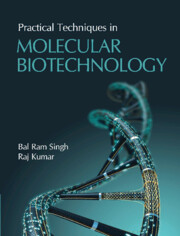1 - Introduction
Published online by Cambridge University Press: 15 October 2021
Summary
Biotechnology – Its Background and History
The office of Technology Assessment of the U.S. Congress defines biotechnology as “any technique that uses living organisms or their products to make or modify a(another) product, to improve plants or animals, or to develop microorganisms for specific uses.” In its broadest terms, such a definition includes human beings, making biotechnology to be as old as the development of human skills such as to grow crops, harvest them, and use them as ingredients to cook their meals. In fact, a term Biotechnik, originally referring to social biology by Goldscheid in 1911, was used in the Nature journal of 1933 to print an editorial on Biotechnology (Bud, 1989; Goldcheid, 1911). Ironically, time has come a full circle as scientists are now examining gene expression patterns under different social conditions (Cole, 2014).
Biotechnology as a system of knowledge and application probably goes back to Vedic times, when the system of Ayurveda (literally meaning knowledge of life) was developed. Reference to the use of herbs for treating medical conditions are to be found in the earliest literature of India, over 14,000 years ago. According to BioREACH (which stands for Biotechnology Resource for Educational Advancement of Curriculum in High Schools at Arizona State University) some forms of biotechnology were being practiced by the ancients in Babylon, Egypt, and Rome in their selective breeding practices with livestock, over 10,000 years ago. There are instances where people around 6000 BC used fermentation to make wine and beer; and when the Chinese used lactic acid producing bacteria to produce yogurt around 4000 BC.
The modern term ‘biotechnology’ was first coined by a Hungarian engineer, Karl Ereky (1878–1952), in 1919. He defined biotechnology as general processes of converting raw materials into useful products, such as on industrial farms, using living organisms. A previous term ‘zymotechnology’ was used in the nineteenth century for using microorganisms to produce products like bread, wine, tofu, and so on. In the early twentieth century zymotechnology also included biological chemistry and covered usage of biological molecules such as enzymes, amino acids, and proteins for industrial production.
Modern biotechnology took root after the discovery of genetic material and the central theme of the gene progression route, namely DNA → RNA → Proteins, during the 1930s to the 1950s.
- Type
- Chapter
- Information
- Practical Techniques in Molecular Biotechnology , pp. 1 - 19Publisher: Cambridge University PressPrint publication year: 2022

